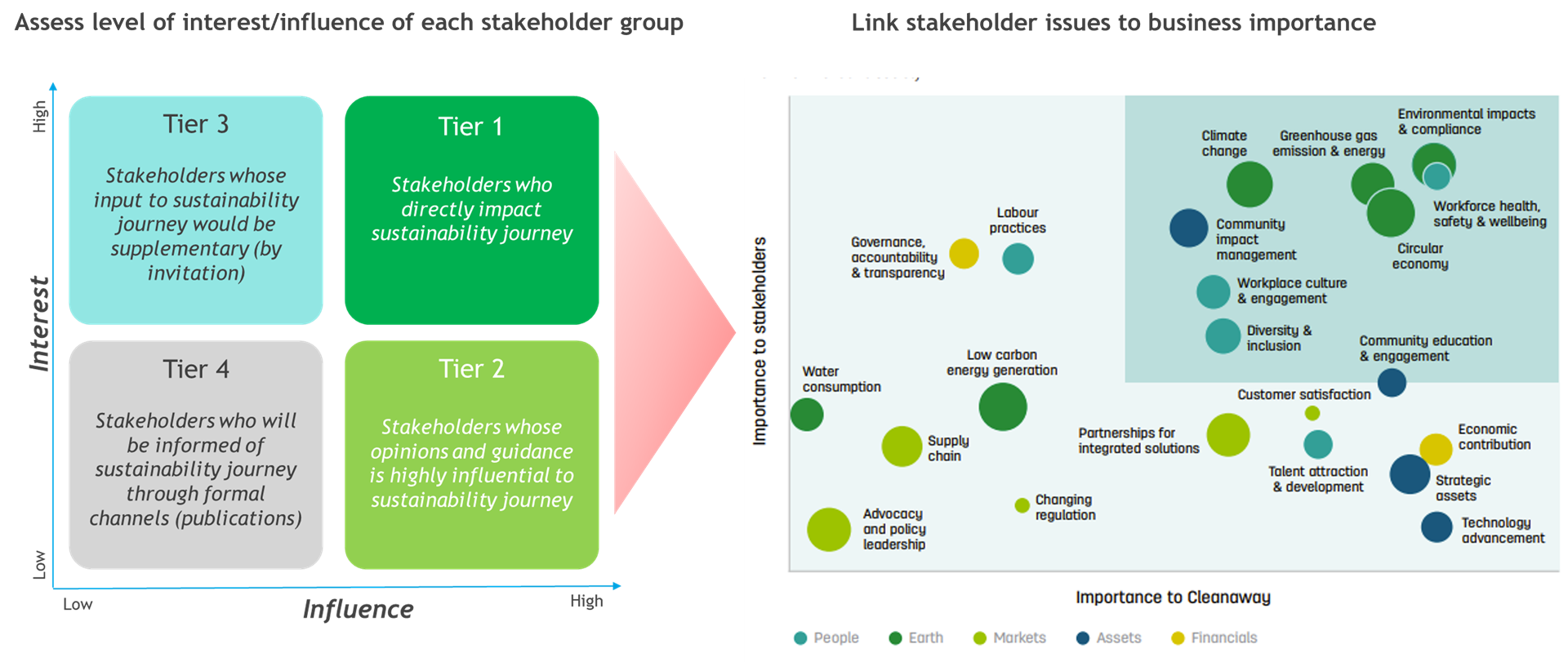Sustainability can provide a competitive advantage in business today. Organisations are increasingly seeing the need to develop an environmental, social and governance (ESG) or sustainability report to meet the expectations of their stakeholders and the public.
Importantly, delivering an ESG report should meet any recommended or required standards of the day, while also demonstrating a commitment to sustainability to a range of stakeholders including current and potential future investors, regulators, suppliers, customers and employees. But pulling together a sustainability report is no mean feat, so here’s a brief guide to help you clear this critical hurdle in your business.
Where to report sustainability information?
Organisations can choose how and where to deliver an ESG report. Not surprisingly, the days of printed, glossy brochures are shifting and most companies will conscientiously think of the carbon footprint and opt to publish sustainability reports digitally.
Many businesses provide the information in one of three ways:
- As part of the audited financial statements
- As part of the broader financial report, like the operating and financial report (OFR), or
- As an independent sustainability report outside the financial report.
The independent release of a sustainability report has pros and cons—including the choice over getting assurance versus the potential risk of the appearance of greenwashing. Either way, the content shouldn’t differ based on where the report is published, and an auditor has a responsibility to ensure its contents are consistent with any audited report.
We’ve been seeing a greater integration of the financial and non-financial reports over time and expect to see more integrated reports as the sustainability reporting ecosystem matures.
What content should a sustainability report include?
What each organisation will include in a sustainability report differs, just as every business is different. Even within an industry, there are nuances in business maturity, culture, mission, location, customer base, supplier relationships and technology that impact the sustainability landscape. However, we see that most reports include initiatives that could fall into the three buckets of environment, social and governance matters.
When considering what should be included in a sustainability report, it is crucial to ask stakeholders what is important to them, and asking stakeholders to rank issues in order of importance can provide valuable insight. Recognising that not all stakeholders will have the same influence over your sustainability journey, the intersection where the identified issues overlap can help to guide what goes into the report. You can request they rank what is important - which also enables you to gain valuable insight for structuring your report.
Alternately, pulling all this information into a diagram can create a powerful visual to reveal the importance of each issue to the business. A graph like this can provides direction on which matters are of the highest importance for a sustainability strategy, and therefore the report.
Stakeholder materiality assessment
Source of example on the right: Cleanaway Sustainability Report 2021 (click image to enlarge)
What format should a sustainability report take?
While there is some latitude on how to format the information included in a sustainability report, there are frameworks to follow, with many overlapping with accounting standards. For example, you could follow the standards being introduced by the International Sustainability Standards Board (ISSB), which are being purposefully designed to work alongside the existing International Accounting Standards Board (IASB) standards and include the TCFDs.
There are numerous other frameworks to choose from, like:
- The United Nations’ Sustainable Development Goals
- The World Economic Forum's Four Pillars
- The Task Force on Climate-Related Financial Disclosures (TCFDs)
- Global Reporting Initiative (GRI) Standards.
Organisations should use the framework most relevant to their stakeholders and business. However, it’s good to avoid the pitfalls of vague and nonspecific statements by marrying sustainability goals with transparent and measurable plans and aligned to the company strategy.
We typically see sustainability reports:
- Review progress made in the previous period, including qualitative metrics and quantitative commentary, and
- Make sustainability commitments for the coming period
- Include case studies and examples of initiatives that help to bring their sustainability story to life.
Who should be involved in sustainability reporting?
Producing a sustainability report is no small task that includes data and process owners in several departments, communications specialists, stakeholders and the executive leadership team. They require information around relevant issues like workplace culture and diversity from HR. For an organisation’s environmental impacts, data will be required from several areas such as IT, operations and the procurement team. In all of these departments, it’s useful to have an ESG champion or champions who are responsible for driving these initiatives and the data collection. Naturally, your marketing team will own the creation and distribution of the report.
Ultimately, for genuine progress and success in this space, the sustainability strategy and reporting process must be supported and led by senior management and the board.
Takeaways for delivering an ESG report stakeholders will appreciate
- Include the ESG report with your company’s annual financials to ensure the information is verifiable and accurate.
- Align your report closely with your business.
- Provide quantitative and qualitative information, backed up by a case study.
For more information on the best ways to pull together and deliver your ESG report, contact us today.
